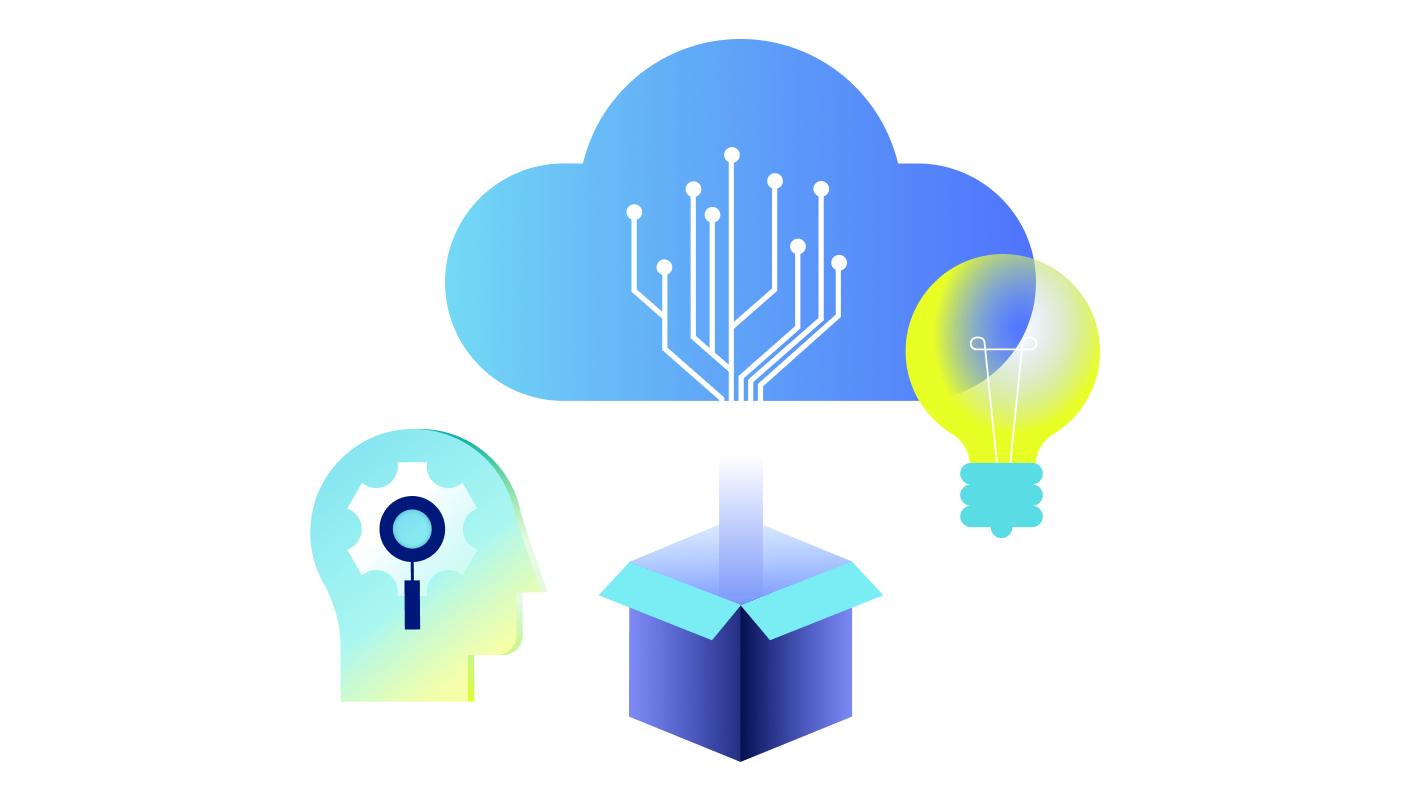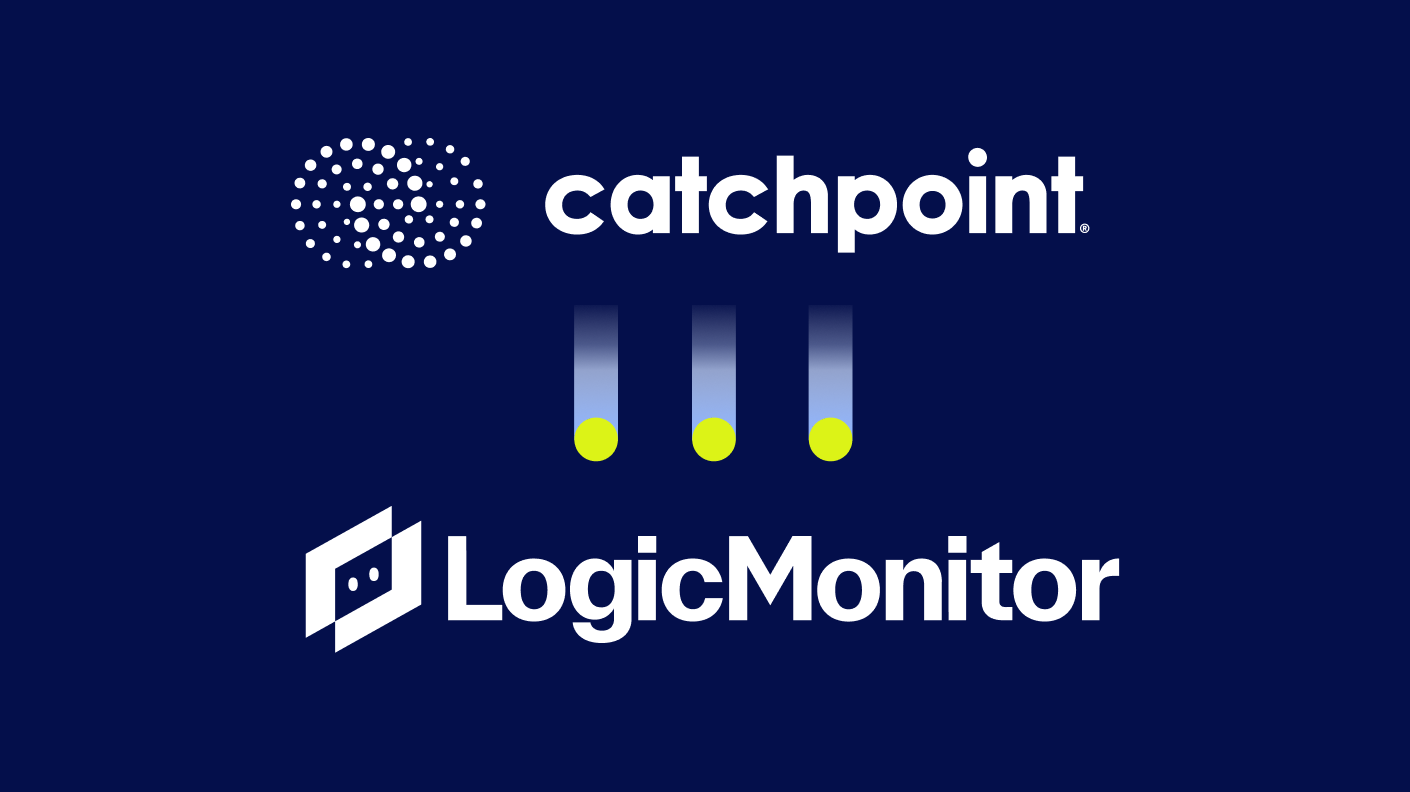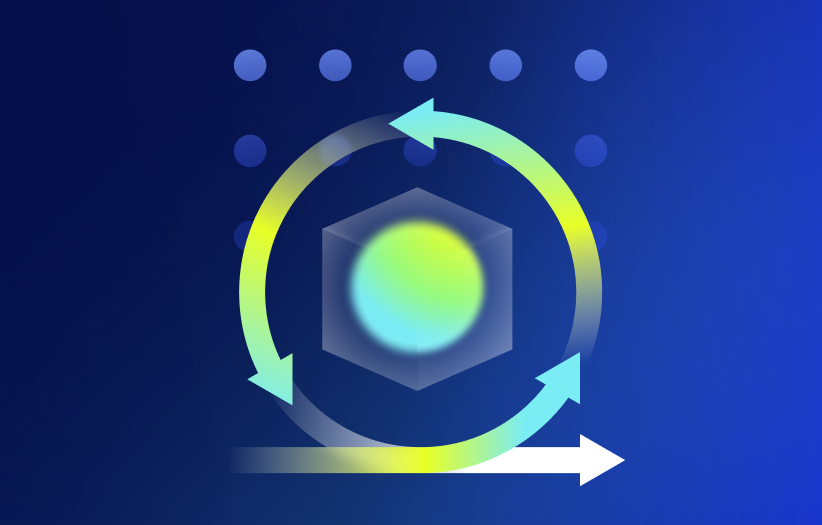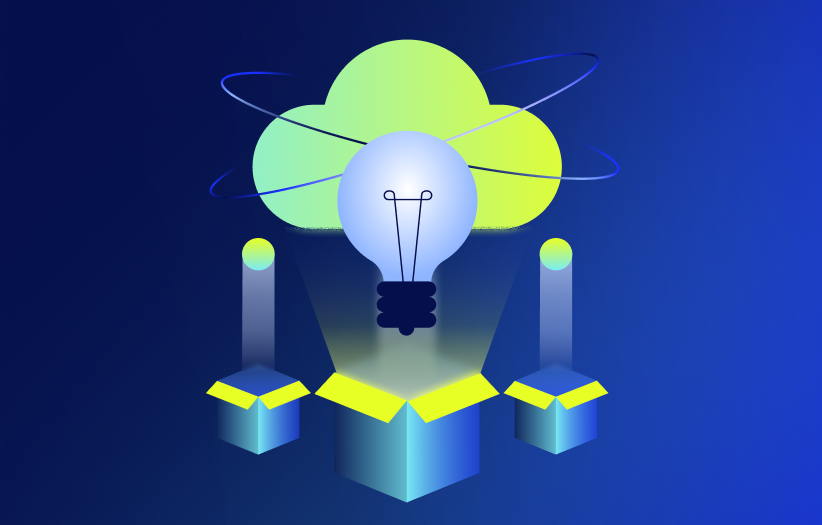Your systems are getting faster. More complex. More distributed. But your tools are still waiting for something to go wrong before they do anything about it.
That’s the real limitation of most AIOps platforms. They highlight issues. They suggest next steps. But they stop short of action—leaving your team to connect the dots, chase down context, and manually fix what broke.
Agentic AIOps doesn’t wait. It acts.
AI agents detect problems, understand what’s happening, and either fix it—or set the fix in motion. They learn from each incident and carry that knowledge forward. This is infrastructure that can think, respond, and improve in real time.
In this piece, we’ll break down the five core benefit areas of agentic AIOps to show how it helps teams move faster, stay more stable, and scale without the tool sprawl.
Let’s get into it.
TL;DR
Agentic AIOps is a smarter, more scalable way to run IT.
- Most AIOps platforms surface problems; agentic AIOps solves them.
- AI agents detect, decide, and act autonomously across your stack.
- Incidents are resolved faster, with less noise and fewer handoffs.
- Reliability improves, scale gets easier, and burnout goes down.
From automation to autonomy
Traditional AIOps helped teams move faster by spotting patterns, detecting anomalies, and speeding up root cause analysis. But under the hood, most of these products still rely on brittle logic—thresholds, static rules, and manual tuning that can’t keep up with constantly changing systems.
When those rules break or environments shift, teams are left scrambling to reconfigure alerts or intervene manually. This all means more noise, slower fixes, and growing maintenance overhead.
Agentic AIOps is a shift from suggestion to action. Instead of surfacing problems and waiting, agentic solutions take the next step: evaluating context, choosing the right response, and executing it autonomously—within the boundaries you set. They learn from every incident and continuously improve.
This doesn’t replace your team; it frees them. No more rule rewrites or repetitive triage. Just faster recovery, smarter operations, and systems that can keep up with change.
Here’s what that enables:
- Faster resolution, with agents moving directly from detection to action
- Higher uptime, through real-time, policy-driven remediation
- Lower maintenance overhead, as systems learn and adapt instead of relying on fixed logic
- Scalable operations, without more headcount
Next, we’ll break down why this shift matters and what agentic AIOps unlocks for modern IT teams.
The operational shift agentic AIOps makes possible
IT environments aren’t just growing; they’re accelerating. More data, more tools, more systems, more change. Every new microservice, cloud region, or release cycle adds complexity. And while the stakes rise, the number of skilled people available to manage it all? That’s not scaling at the same rate.
Teams today are navigating:
- A constant stream of logs, metrics, traces, and alerts—often across dozens of systems
- Hybrid and multi-cloud architectures that introduce visibility gaps and coordination overhead
- Faster release cycles that can introduce regressions before anyone notices
- Ongoing skills shortages, making it harder to recruit or retain engineers with the right expertise
It’s no wonder that IT operations are harder to manage, harder to scale, and increasingly reactive.
Instead of stopping at insight, agentic AIOps closes the loop—moving from detection to autonomous remediation. These agentic systems understand context, evaluate options, and execute the fix. Automatically. In real time. According to the policies and guardrails you set.
This is the foundation for next-generation, self-healing IT operations:
- Systems that detect and resolve issues before they escalate
- Workflows that adapt to real-time conditions
- Teams that stay focused on strategic work, not endless fire drills
Agentic AIOps gives your IT organization the speed, resilience, and intelligence it needs to keep up with everything else that’s changing.
The benefits of agentic AIOps
Incident response & operational speed
Struggling to keep up with alerts, triage, and resolution? You’re not alone. Today’s IT teams are expected to resolve incidents faster, with fewer people, across more complex environments. Traditional solutions generate mountains of alerts—but leave the interpretation and response to human operators. That slows things down, increases risk, and pulls engineers away from strategic work.
By embedding intelligent agents that can observe, analyze, and act, agentic AIOps shortens every step of the incident lifecycle. Instead of waiting on manual triage, it detects issues early, understands context, and either recommends or initiates resolution—all in real time.
Here’s how that translates into tangible AIOps benefits:
Autonomous incident resolution
Agentic AIOps systems are designed to handle the entire resolution loop: from detection to diagnosis to action.
- What it does: Detects anomalies across telemetry, identifies likely root causes using pattern recognition and statistical modeling, and triggers pre-approved remediation workflows.
- What it replaces: Manual alert triage, root cause guessing, slow escalation chains.
- The benefit: Dramatically reduced MTTR (mean time to resolution) with fewer incidents escalating to critical levels.
Accelerated root cause analysis
Even when teams know something is wrong, finding why can take hours.
- What it does: Correlates logs, metrics, traces, and topology to identify the most probable root cause. Uses machine learning to filter irrelevant signals and highlight meaningful patterns.
- What it replaces: Hours of log sifting, guesswork across systems, siloed team investigations.
- The benefit: Speeds up decision-making and gives teams confidence in the fix.
Smarter triage, less escalation
.Legacy monitoring solutions flood teams with alerts—many of them false positives or duplicates.
- What it does: Uses correlation and enrichment to group related alerts into meaningful incidents. Applies thresholds, context, and past behavior to assess urgency and impact.
- What it replaces: Alert storms, endless queue triage, and noisy dashboards.
- The benefit: Less burnout, more focused response, and fewer unnecessary escalations.
Consistent, repeatable incident handling
IT operations often depend on tribal knowledge—what worked last time, and who remembers how it was fixed.
- What it does: Captures incident context, resolution steps, and outcomes. Reuses past remediations in future scenarios through similarity detection and recommendation models.
- What it replaces: Inconsistent fixes, repeated investigations, and fragmented institutional knowledge.
- The benefit: Standardized response quality, faster fixes, and better handoffs between shifts or teams.
Uptime & service reliability
When performance drops, so does trust. Today’s users expect applications and digital services to “just work”—with speed, stability, and no surprises. But maintaining reliability in dynamic, multi-cloud environments is no small task. With constant releases, shifting dependencies, and distributed infrastructure, even small misconfigurations can lead to major disruptions.
Agentic AIOps helps you stay ahead of failure—not just respond to it. By continuously monitoring system health, identifying risks, and taking autonomous action, agentic AIOps prevents downtime and safeguards user experience at scale.
Here are three agentic AIOps benefits that directly improve uptime and reliability:
Maintains service reliability in dynamic environments
Modern IT ecosystems are constantly changing—new code, new workloads, new traffic patterns. Static monitoring can’t keep up.
- What it does: Continuously observes infrastructure and application health across cloud, hybrid, and on-prem environments. Detects performance anomalies, capacity risks, and misaligned thresholds in real time.
- What it replaces: Reactive incident response, slow manual correlation, guesswork in complex environments.
- The benefit: Prevents service degradation before users feel it. Keeps critical applications running smoothly—even during change.
Curious how ITOps teams are shifting from reactive to predictive?
Download our white paper, AIOps Evolved: How Agentic AIOps Transforms IT, and discover how a modular, AI-driven approach can future-proof your operations.
Get the white paper now
Proactive risk mitigation
Many high-impact outages start small—subtle memory leaks, creeping latency, or misconfigurations that build up over time.
- What it does: Applies predictive models to detect early indicators of risk—like resource contention, config drift, or outdated dependencies. Suggests or initiates mitigation based on severity and business impact.
- What it replaces: Periodic health checks, reliance on human intuition, incident-prone firefighting.
- The benefit: Reduces the likelihood of failure by handling root causes early, not just the symptoms.
Early detection of systemic issues
Some problems don’t show up in a single alert—they show up in patterns over weeks or months.
- What it does: Analyzes historical telemetry to surface recurring issues tied to specific services, regions, workloads, or infrastructure components. Flags architectural weaknesses, aging infrastructure, and chronic bottlenecks.
- What it replaces: Disconnected root cause investigations, blind spots in trend analysis, teams chasing symptoms instead of sources.
- The benefit: Enables long-term reliability planning and targeted investment in infrastructure improvements.
Scale, consistency & knowledge
More complexity doesn’t have to mean more people. As IT environments scale, so do expectations—faster resolution, better uptime, deeper visibility. Growing your infrastructure shouldn’t mean growing your team at the same rate. The real challenge is scaling operations without sacrificing consistency, accountability, or knowledge retention.
By using intelligent agents that learn from context, follow policy-aligned workflows, and capture operational knowledge, agentic AIOps becomes a force multiplier.
Here’s how agentic AIOps helps teams scale smarter and operate more consistently:
Scalability without adding headcount
Hiring another engineer isn’t always an option; agentic systems can help.
- What it does: Deploys specialized agents to handle detection, triage, documentation, and even resolution tasks autonomously. Expands capacity without manual intervention.
- What it replaces: Reliance on overworked teams, constant escalations, and late-night fire drills.
- The benefit: Grows your operational coverage without growing your payroll—critical for managing hybrid, containerized, or multicloud environments.
Operational consistency across teams.
Different teams. Different time zones. Different response styles. Consistency isn’t just about process; it’s about trust in outcomes. Agentic AIOps delivers both.
- What it does: Standardizes incident response based on defined policies and playbooks. Applies the same logic to similar problems, regardless of who’s on shift or which team is involved.
- What it replaces: Ad hoc fixes, inconsistent handoffs, and tribal knowledge silos.
- The benefit: Ensures that every incident—whether critical or routine—is handled the same way: fast, accurate, and aligned with business priorities.
Embedded operational memory
When knowledge walks out the door, performance suffers.
- What it does: Captures context around incidents—what happened, how it was resolved, and why it mattered. Organizes this information into usable records for future reference.
- What it replaces: Forgotten resolutions, undocumented workarounds, and repeated guesswork.
- The benefit: Makes your operation smarter over time, preserving insights even as teams shift or grow.
Simple postmortems and documentation
Documenting after the fact is often the first thing to fall through the cracks.
- What it does: Automatically generates structured incident summaries, including root cause, remediation, impact, and timelines. Pushes records to ITSM systems or internal knowledge bases.
- What it replaces: Manual postmortems, missing audit trails, and fragmented documentation.
- The benefit: Ensures clean, consistent records are created every time—without slowing down engineers.
Faster onboarding for new engineers
Training new team members takes time—and access to the right information.
- What it does: Makes past incidents searchable, context-rich, and easy to understand. Exposes resolution patterns and best practices through summaries and AI tagging.
- What it replaces: Over-reliance on peer shadowing, lengthy documentation hunts, or “ask the senior engineer” workflows.
- The benefit: Reduces ramp-up time and helps new hires contribute faster with less friction.
Cost, efficiency & strategy
IT budgets are under pressure—but expectations keep rising. Teams are being asked to do more with less: manage larger environments, respond faster to incidents, and support modernization—all without inflating headcount or costs.
Here’s how agentic AIOps helps reduce costs, increase efficiency, and drive ITOps strategy forward:
Cost optimization at scale
Cloud spend, licensing, and staffing costs can spiral fast—especially in dynamic environments.
- What it does: Continuously monitors infrastructure usage and dynamically adjusts capacity to meet demand. Supports auto-scaling, rightsizing, and workload optimization across cloud and on-prem environments.
- What it replaces: Manual resource provisioning, static thresholds, and overprovisioned environments “just in case.”
- The benefit: Reduces total cost of ownership (TCO) by eliminating waste and optimizing compute spend in real time.
Sustainability gains
Efficiency is about more than dollars; it’s also about your footprint.
- What it does: Improves environmental sustainability by minimizing idle resources, reducing unnecessary compute cycles, and aligning workloads with real-world demand.
- What it replaces: Overbuilt systems, always-on capacity buffers, and wasteful infrastructure sprawl.
- The benefit: Reduces energy usage and emissions while still meeting performance needs—supporting ESG goals without tradeoffs.
Foundation for fully autonomous IT
Agentic AIOps is a stepping stone to an entirely new operational model.
- What it does: Introduces modular agents that work independently and in coordination to detect, decide, and act. Establishes a framework for future growth into more autonomous, self-managing systems.
- What it replaces: Script-based automation and rigid workflows that can’t adapt to changing environments.
- The benefit: Builds long-term agility into your tech stack—reducing manual toil today and laying the groundwork for AI-driven operations tomorrow.
Automation without strategy is just efficiency.
- What it does: Frees up engineering and operations teams from repetitive tasks, enabling them to focus on projects that drive competitive advantage—like cloud migration, DevOps maturity, or customer experience initiatives.
- What it replaces: Time lost to alert triage, incident firefighting, and manual ticketing workflows.
- The benefit: Moves IT from reactive support to proactive enabler—faster innovation, stronger alignment with business goals, and greater speed to market.
Want the data behind the transformation?
Download the EMA report, Unleashing AI-Driven IT Operations, to see how 500+ IT leaders are using AI to accelerate innovation, cut response times, and drive real ROI.
Get the report now
Security & governance
Security threats don’t wait for tickets to be triaged. As infrastructure grows more distributed and dynamic, so do the attack surfaces. At the same time, compliance requirements, incident response times, and audit expectations are tightening. IT teams are caught between the need for speed and the need for control.
By enabling intelligent, real-time response—backed by transparent decision logic and human-defined guardrails—agentic AIOps improves security readiness without sacrificing governance.
Here’s how agentic AIOps supports a more secure, more accountable IT operation:
Enhanced security response
Modern security incidents evolve quickly. Waiting for manual intervention can cost time, data, and customer trust.
- What it does: Continuously monitors telemetry for suspicious patterns across infrastructure, applications, and services. When threats are detected, it can automatically isolate compromised resources, trigger containment workflows, or initiate alerts to SOC teams.
- What it replaces: Delayed responses, manual incident routing, and missed escalation windows.
- The benefit: Reduces mean time to detect (MTTD) and mean time to respond (MTTR) for security events—helping teams act before damage spreads.
Human-AI collaboration with guardrails
Autonomy doesn’t mean letting go of control. In regulated and high-risk environments, responsible automation is non-negotiable.
- What it does: Allows teams to define policy-based guardrails, escalation paths, and approval flows. AI agents operate within these constraints—taking action where it’s safe, escalating when it’s not.
- What it replaces: All-or-nothing automation models that force a choice between speed and safety.
- The benefit: Enables phased adoption of autonomous workflows, with visibility into every decision—so teams can trust the system and keep control.
What you need to get agentic AIOps right
Agentic AIOps can transform how IT operations function—but it’s not plug-and-play. To get real value, teams need the right foundation: clean data, defined oversight, and the internal alignment to support responsible autonomy.
First, data quality is non-negotiable. Agentic systems rely on complete, accurate, and timely telemetry—from logs and metrics to traces and event metadata. Without comprehensive observability pipelines in place, AI agents can’t make context-aware decisions, and automation risks becoming noise instead of value.
Next, autonomy still needs oversight. AI agents should operate within clearly defined boundaries, guided by policies that reflect your organization’s tolerance for automation. Teams must define goals, escalation paths, and fail-safes before agents are allowed to take action.
As automation expands, so does the need for governance. Every decision—whether executed or just suggested—should be traceable, auditable, and explainable. This transparency builds trust, supports compliance, and ensures your automation layer remains aligned with broader business objectives.
Finally, your team needs to grow with the system. Agentic AIOps shifts operations from manual response to strategic supervision. That means reskilling teams to configure, monitor, and fine-tune automated workflows—not just react to them. Upskilling isn’t a nice-to-have—it’s what ensures the tech actually gets used.
To recap, here’s what’s essential:
- Accurate, real-time observability data across your full stack
- Clear policy definitions for agent behavior and escalation
- Governance frameworks for auditing, transparency, and control
- Training and enablement to help teams lead, not just follow
Agentic AIOps is about giving your people more leverage. With the right foundations in place, teams can trust AI to take on the repetitive work, while they stay focused on what truly moves the business forward.
The benefits of getting agentic AIOps right: Smarter systems, stronger teams
Today’s IT tools are still stuck reacting—surfacing alerts, surfacing insights. Agentic AIOps changes that by closing the loop between detection and resolution, turning noisy signals into automated action.
This is about fundamentally redesigning how IT operates:
- From reactive to proactive
- From manual intervention to reasonable autonomy
- From brittle workflows to systems that adapt and improve over time
For teams under pressure to do more with less, agentic AIOps offers a path forward. But like any shift, it takes intent. Clean data. Clear policies. And teams ready to lead with oversight—not be buried in alert fatigue.
The promise of agentic AI is operations that can finally keep up with everything else that’s accelerating around them.
Ready to see how agentic AIOps works in practice?
See use cases
Margo Poda leads content strategy for Edwin AI at LogicMonitor. With a background in both enterprise tech and AI startups, she focuses on making complex topics clear, relevant, and worth reading—especially in a space where too much content sounds the same. She’s not here to hype AI; she’s here to help people understand what it can actually do.
Disclaimer: The views expressed on this blog are those of the author and do not necessarily reflect the views of LogicMonitor or its affiliates.
© LogicMonitor 2025 | All rights reserved. | All trademarks, trade names, service marks, and logos referenced herein belong to their respective companies.






